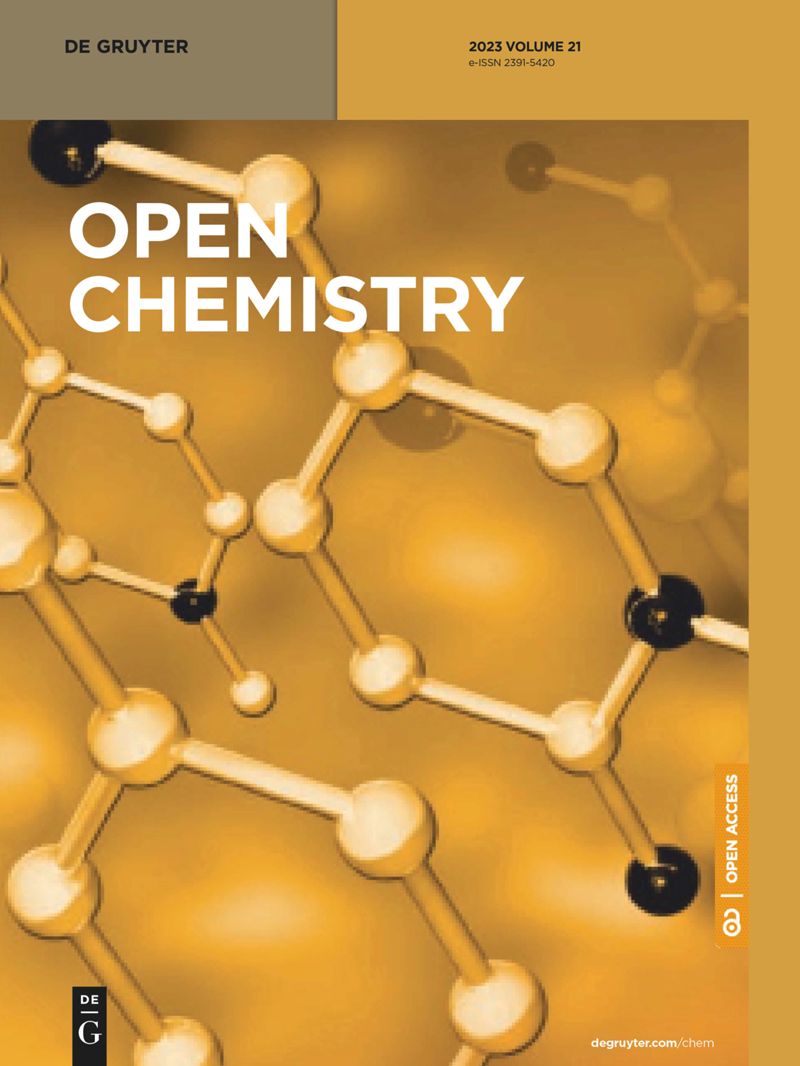利用莽草海洋真菌 Amarenographium solium 绿色合成银纳米粒子及其对多种耐药细菌的活性
IF 1.9
4区 化学
Q3 CHEMISTRY, MULTIDISCIPLINARY
引用次数: 0
摘要
用于细菌处理的银纳米粒子(AgNPs)的绿色合成途径因其成本效益、无毒性和生态友好性而被视为至关重要。在本研究中,研究人员利用从沙特阿拉伯阿拉伯湾沿岸分离出的莽草海洋真菌 Amarenographium solium,通过对硝酸银(AgNO3)水溶液进行生物还原,合成了 AgNP。无细胞滤液呈深棕色,可直观识别 AgNP 合成是否成功,紫外可见光谱进一步证实了这一点,该光谱在 425 纳米处显示了一个峰值。利用 X 射线衍射数据分析对生成的 AgNPs 进行了进一步表征,证明银被生物还原至 20 纳米,透射电子显微镜显示形成了分散良好的球形纳米粒子,平均尺寸为 12 纳米。对温度、pH 值和金属盐浓度等反应参数进行了优化,结果分别为 30°C、7 和 1.5 mM,以实现快速和最大产量的生产。使用两倍微稀释法评估了所制纳米粒子的抗菌活性,结果显示 AgNP 对多种耐药菌株的最小抑菌浓度为 9.375 μg/mL。本文章由计算机程序翻译,如有差异,请以英文原文为准。
Exploitation of mangliculous marine fungi, Amarenographium solium, for the green synthesis of silver nanoparticles and their activity against multiple drug-resistant bacteria
The green synthesis pathway for silver nanoparticles (AgNPs) used in bacterial treatment is regarded as crucial because of its cost-effectiveness, nontoxicity, and eco-friendliness. During the present work, the mangliculous marine fungi Amarenographium solium isolated from the Arabian Gulf Coast of Saudi Arabia were utilized for the synthesis of AgNP, through the bio-reduction of aqueous silver nitrate (AgNO3 ) solution. The success in AgNP synthesis was visually identified by the development of dark brown color in the cell-free filtrate and was further confirmed by ultraviolet–visible spectroscopy, which showed a peak at 425 nm. The AgNPs produced were further characterized using X-ray diffraction data analysis that proved the bioreduction of silver to 20 nm, and transmission electron microscopy revealed the formation of well-dispersed spherical nanoparticles with an average mean size of 12 nm. The optimization reaction parameters of temperature, pH, and metal salt concentration were carried out and resulted in a combination of 30°C, 7 and 1.5 mM, respectively, for rapid and maximum yield production. The antibacterial activity of the produced nanoparticles was evaluated using the two-fold microdilution method and showed a minimum inhibitory concentration of 9.375 μg/mL of AgNP against multiple drug-resistant bacterial strains.
求助全文
通过发布文献求助,成功后即可免费获取论文全文。
去求助
来源期刊

Open Chemistry
CHEMISTRY, MULTIDISCIPLINARY-
CiteScore
3.80
自引率
4.30%
发文量
90
审稿时长
6 weeks
期刊介绍:
Open Chemistry is a peer-reviewed, open access journal that publishes original research, reviews and short communications in the fields of chemistry in an ongoing way. The central goal is to provide a hub for researchers working across all subjects to present their discoveries, and to be a forum for the discussion of the important issues in the field. The journal is the premier source for cutting edge research in fundamental chemistry and it provides high quality peer review services for its authors across the world. Moreover, it allows for libraries everywhere to avoid subscribing to multiple local publications, and to receive instead all the necessary chemistry research from a single source available to the entire scientific community.
 求助内容:
求助内容: 应助结果提醒方式:
应助结果提醒方式:


